











EXECUTIVE BOARD:
Mrs. Barbara Davis, Chairman
Ms. Dana Davis, Executive Director
Mrs. Arlene Hirschfeld, Emeritus
Mr. Cameron van Orman, Vice Chairman
Richard S. Abrams, M.D., Treasurer
Mr. Shane Hendryson, Secretary
Mrs. Lisa Corley
Stephen Daniels, M.D., Ph.D.
Chairman of Pediatrics
The Children’s Hospital, Denver
Mrs. Nancy Davis Rickel
Daniel Feiten, M.D.
Mr. Wayne Forman
Mrs. Deidre Hunter
Mr. Shawn Hunter
Mr. Steve Lucas
John J. Reilly, Jr., M.D.
Vice Chancellor for Health Affairs & Dean, School of Medicine, University of Colorado Denver
Mr. Ken Rickel
Mrs. Stacy Mendelson Robinson
Marian Rewers, M.D., Ph.D. Ex-Officio Member
Mr. Joseph Smolen
Mrs. Tracy van Orman
Mrs. Cindy Wells
SCIENTIFIC ADVISORY BOARD:
Richard S. Abrams, M.D.
Director, Colorado Preventive Medicine, Rose Medical Center; Clinical Professor of Medicine UCD
Mark Atkinson, Ph.D.
Professor of Pathology & Pediatrics, Director, University of Florida Diabetes Institute
Ezio Bonifacio, Ph.D.
Professor for Preclinical Approaches to Stem Cell Therapy, Center for Regenerative Therapies, Dresden, Germany
Robert Eckel, MD
Professor of Medicine, Physiology and Biophysics, University of Colorado School of Medicine
Matthias Hebrok, Ph.D.
Professor in Residence and Director, Diabetes Center, University of California, San Francisco
Steven Kahn, MB, Ch.B.
Professor of Medicine, Director of the Diabetes Research Center, University of Washington
Rudolph Leibel, MD
Professor of Pediatrics and Medicine, Co-Director, Naomi Berrie Diabetes Center, Columbia University
Alvin Powers, MD
Professor of Medicine, Molecular Physiology/Biophysics, Division Director, Vanderbilt University
William Tamborlane, MD
Professor of Pediatrics, Yale University School of Medicine

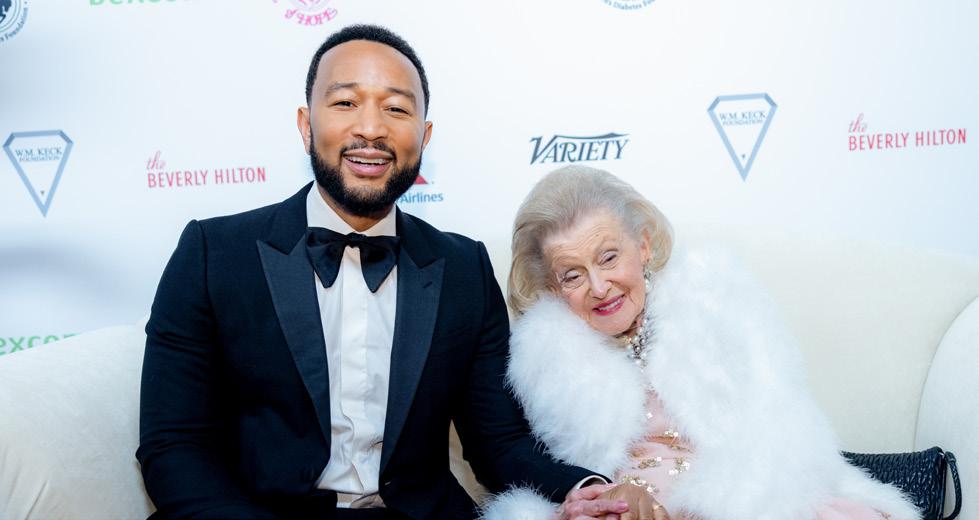
On Saturday, October 8, 2022, event chair Barbara Davis and co-chair Dana Davis hosted the 36th Carousel of Hope Ball at The Beverly Hilton hotel in Beverly Hills benefiting the Children’s Diabetes Foundation and the Barbara Davis Center for Diabetes. The event, a Hollywood institution since 1978, honored Diane Keaton with the “Brass Ring Award,” while patrons of the evening were treated to show-stopping performances by music icons John Legend, Andy Grammer and Deborah Cox. The Ball raised over $1.7 million this year alone in addition to the more than $110 million that The Carousel Balls have raised to date.
This year’s Ball brought together leaders from the film, television, music and business industries to support increasing awareness for diabetes and raise funds for clinical care and diabetes research at the Barbara Davis Center for Diabetes. The event celebrated all the remarkable things the Barbara Davis Center for Diabetes has accomplished and brought to the forefront of diabetes care, as well as the exciting research and influential moments the Barbara Davis Center has been a part of since its inception in 1978.
Emcee Howie Mandel kicked things off, welcoming guests to the ball before he introduced a video message from Barbara Davis. In closing out her remarks, Davis said, “Type 1 diabetes, you’re gone. It won’t be long before everybody’s healed,” which was met with cheers from guests.

Emmy award-winner Loretta Devine took to the stage to present the “Brass Ring Award” to legendary actor Diane Keaton for her philanthropic commitments to the community and continued support of the cause. The award was named after the elusive brass ring that carousel riders would try to catch when the ride first became popular. Now universally recognized as a symbol of achievement, the brass ring represents the ultimate goal of finding a cure for diabetes. Recipients of the award
exemplify the dedication and strength that brings the Children’s Diabetes Foundation and the Barbara Davis Center one step closer to finding a cure. In accepting the award, Keaton said, “I’m surprised and humbled to be the recipient of this important award, which represents a very urgent and universal cause in the world today and the pioneering work of Barbara Davis.”
Multi-platinum artist Andy Grammer kicked off the evening’s musical performances with his hit songs “Keep Your Head Up” and “Honey, I’m Good.” Awardwinning recording artist Deborah Cox took to the stage next to sing “Happy Birthday” to Barbara Davis for her 92nd birthday and to perform “Nobody’s Supposed To Be Here,” among other hits. EGOT-winning, critically acclaimed, and multi-platinum singer-songwriter John Legend closed out the night with inspiring performances of “Bridge Over Troubled Water,” “All of Me,” “Ordinary People,” and “Dancing In the Dark.”
The Ball featured a live auction led by auctioneer Halie Behr including a three-night stay at Rancho Valencia Resort & Spa, a four-night stay at The Little Nell in Aspen, a five-night stay at Grace Bay Club in Turks & Caicos, and a diamond necklace from XIV Karats LTD.








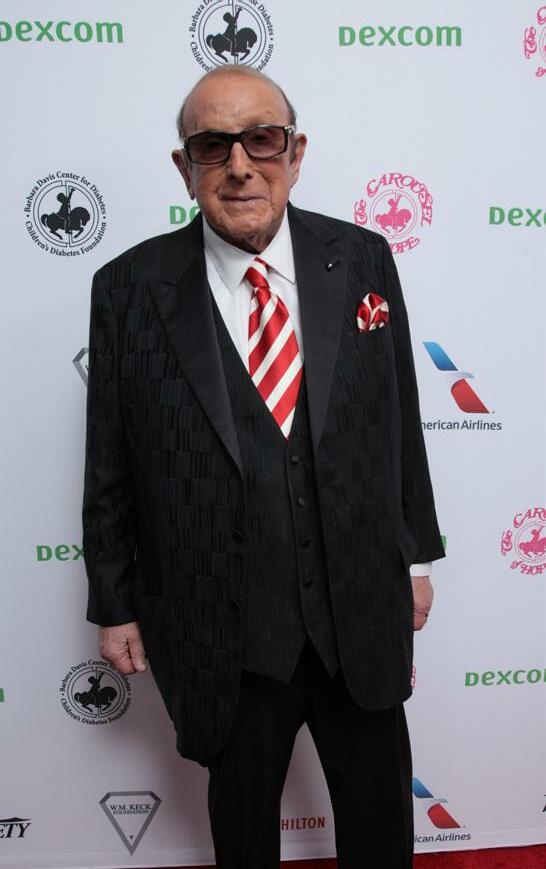



special guests at this year’s event
Ed Begley Jr., Amanda Booth, Jamie Brewer, Shannon Dang, Janice Dickinson, Julie Ann Emery, Josh Flagg, Berry Gordy, Kathy & Rick Hilton, Dr. Robert Huizenga, Jimmy Jam, Charlie Kimball, Nigel Lythgoe, Krys Marshall, AnnaLynne McCord, Lyndon Smith, Daniel Sunjata, Linda Thompson, Ann Turkel, Richard Weitz, and many more!

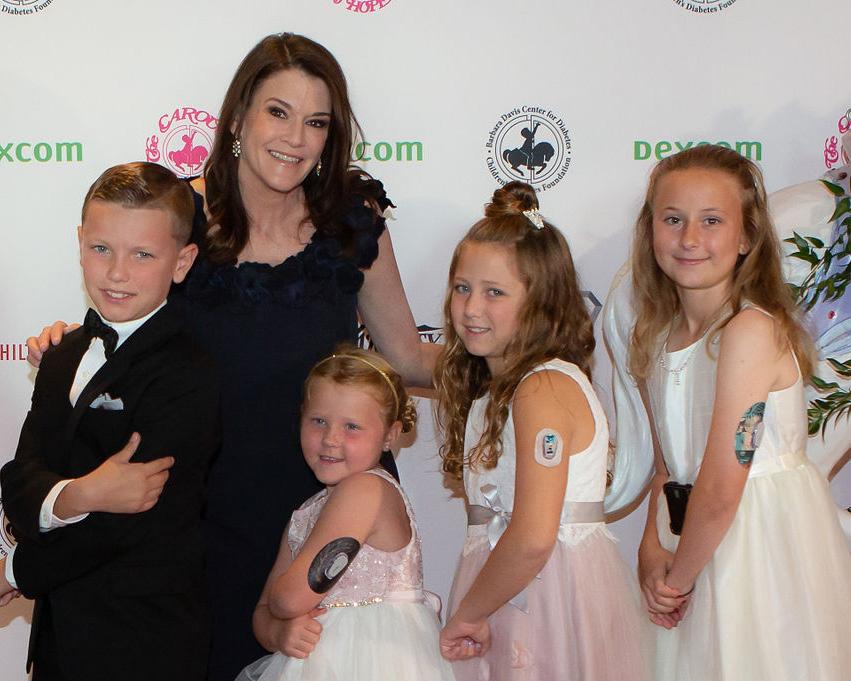










Diabetes Awareness Month is observed every November throughout the United States to bring attention to the disease and those affected by it. World Diabetes Day (November 14th) was created by the International Diabetes Foundation and the World Health Organization in 1991 in response to growing concerns about the escalating health threat posed by diabetes. It is the largest diabetes awareness campaign, reaching over 1 billion people in more than 160 countries.
This year, the Children’s Diabetes Foundation created the #T1DSuperhero movement to highlight the superheroes living with type one diabetes, the hardships of being an everyday hero, and the monster myths they combat daily. Select participants were featured on social media to help combat common misinformation about the disease, drive awareness around recognizing the symptoms of type one diabetes, and educate the public on the differences between T1D and other forms of the disease.
In addition, iconic Denver facilities illuminated their buildings with blue lights! If you drove around town in November, you saw The Confluence, Elitch Gardens Ferris Wheel, Union Station, Empower Field at Mile High, DaVita Headquarters, Ball Arena, Meow Wolf, and the City & County of Denver light up blue in support of diabetes. Blue is the universal color of diabetes and symbolizes support of Diabetes Awareness Month and World Diabetes Day on November 14.
Support your T1D superhero by purchasing a “Type 1 Superhero” or “Type 1 Sidekick” t-shirt, long sleeve, or hoodie. These limited time shirts are designed to serve as a conversation starter to help educate the public, dispel misconceptions, and celebrate the everyday superheroes living with T1D. Get yours while you can at childrensdiabetesfoundation.itemorder.com/shop/home.





Do you have frequent visits to the ER with symptoms of persistent nausea and vomiting and unexplained frequent diabetic ketoacidosis (DKA)? If you have type 1 diabetes and consume cannabis regularly, you may have Hyperglycemic Ketosis due to Cannabis Hyperemesis Syndrome (HK-CHS). Researchers from the Barbara Davis Center for Diabetes, Dr. Akturk and Dr. Shah, described a new syndrome mimicking diabetic ketoacidosis in cannabis users with type 1 diabetes. The new syndrome is called HK-CHS which mimics the presentation of DKA and is characterized with persistent symptoms of nausea and vomiting. Dr. Akturk says, “If you have especially early-morning nausea and vomiting and when you visit ER with these symptoms, your blood glucose is high, there is a chance you may have HK-CHS”. The initial research done at the BDC showed Dr. Akturk and Dr. Shah that cannabis users with type 1 diabetes have 2-to-3-fold increased risk of DKA. Further research showed cannabis users with type 1 diabetes have a very different metabolic profile than non-cannabis users with type 1 diabetes that present to the emergency room with symptoms of DKA. Drs. Akturk and Shah suggested a diagnostic criterion as published in reputable journal, Diabetes Care. According to these criteria, cannabis users with type 1 diabetes have higher pH and bicarbonate at the presentation to the ER. These tests are routinely done at the evaluation of DKA.
An earlier study done by Dr. Akturk and Dr. Shah at the BDC Adult Clinic showed that about 30% of adult patients with type 1 diabetes used cannabis at least once in last 12 months. With the perception in society and legalization of cannabis, there has been an increase in cannabis use among people with type 1 diabetes in general. Researchers also investigated the potential addiction risk of cannabis among cannabis user adults with type 1 diabetes. Research showed that up to 40% of adults are at risk of cannabis misuse and 18% of them likely have a cannabis use disorder.

Dr. Akturk suggested that cannabis users with type 1 diabetes should be aware of these risks and should seek medical attention if they have frequent nausea and vomiting episodes.

1. Akturk HK, Snell-Bergeon J, Kinney GL, Champakanath A, Monte A, Shah VN. Differentiating Diabetic Ketoacidosis and Hyperglycemic Ketosis Due to Cannabis Hyperemesis Syndrome in Adults With Type 1 Diabetes. Diabetes Care. 2022 Feb 1;45(2):481-483.
2. Kinney GL, Akturk HK, Taylor DD, Foster NC, Shah VN. Cannabis Use Is Associated With Increased Risk for Diabetic Ketoacidosis in Adults With Type 1 Diabetes: Findings From the T1D Exchange Clinic Registry. Diabetes Care. 2020 Jan;43(1):247-249.
3. Akturk HK, Taylor DD, Camsari UM, Rewers A, Kinney GL, Shah VN. Association Between Cannabis Use and Risk for Diabetic Ketoacidosis in Adults With Type 1 Diabetes. JAMA Intern Med. 2019 Jan 1;179(1):115-118.
4. Camsari UM, Akturk Hk, Taylor DD, et al. Unhealthy Cannabis Use Among Recreational and Medical Cannabis Users with Type 1 Diabetes, Canadian Journal of Addiction 2019.
DOI: 10.1097/CXA.0000000000000061
Hi, my name is Gavin and I am 11 years old. I have lived with type 1 diabetes for seven years. Living with type 1 diabetes is very hard because no one understands what it’s like.

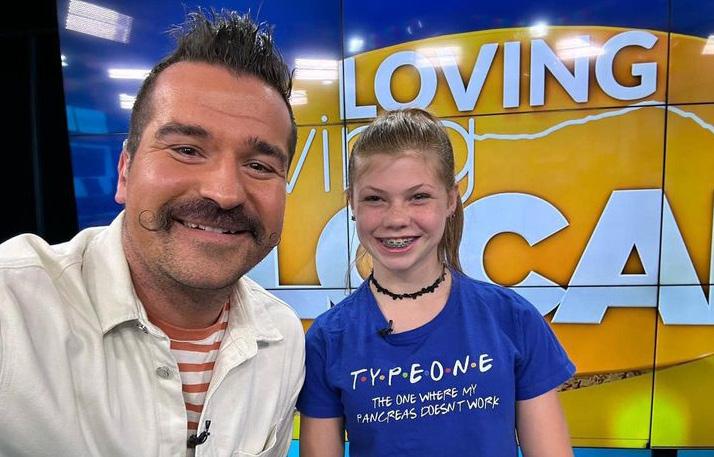

Living with type 1 diabetes is hard because you have to get insulin and it makes me feel shaky and out of this world. Sometimes when I am low, I don’t feel good and when I am high I get hot and it is hard to focus. When my blood sugar isn’t high or low, I feel great! I also wear cool devices.
I wear an Omnipod 5 insulin pump and a Dexcom and they help manage my blood sugars and keep me healthy. The Omnipod is very nice because when I go high it sometimes gives me insulin on its own. Before I wore an insulin pump, I had to do shots. Whenever I got shots, I would run away because it scared me. I am thankful for my Omnipod because if I had to do shots, I would hate it. That’s why I am thankful for my pump and Dexcom.
I hope one day that there is a cure for type 1 diabetes. I want to be a normal kid. A normal kid is someone who is not a diabetic and does not have to get juice every 5 minutes!!! Just kidding, but sometimes it feels that way. I would also like to go down the stairs on my butt without a dexcom in my way. I just wish I did not have diabetes. Until then, I will have to deal with it.

On Saturday November 12th 2022, one of CDF’s amazing Advocates, Matti Leva put on a craft fair to raise money for the Children’s Diabetes Foundation. Her craft fair, titled “All I Want for Christmas is a Cure” featured 42 different vendors, type 1 diabetes awareness ornaments, and a performance from the dancers at Grand Peak Academy. Matti had her own booth and sold beautiful jewelry, including necklaces specifically made to celebrate Diabetes Awareness month. Matti also appeared on KOAA 5 and Loving Living Local to promote this event!

Matti had great support from her community in Colorado Springs. Hundreds of people came out to support the event and do some early holiday shopping. The vendors sold clothing, soap, jewelry, dog accessories, and so much more! The All I want for Christmas is a Cure event raised $3,515 for CDF! The Children’s Diabetes Foundation is so thankful for our fantastic Advocates and the incredible work they do in their communities! A huge thank you to Matti, Ashley and Jason for orchestrating such an impactful event!

It’s important to know that Type 1 and Type 2 diabetes are extremely different diseases. While they both deal with insulin and the body, their causes and treatments are very different.

TYPE 1 diabetics CANNOT make their own insulin. Type 1 is a genetic, auto-immune disease. It is thought that type 1 is present in the body’s genetic code and then it presents at various times. Basically meaning, it’s lying there in wait and decides to show itself at various ages. The majority of type 1 patients get diagnosed in their childhood and when they are adolescents, however it can happen later in life. The body begins attacking its own pancreatic cells, specifically the islet cells that make insulin in our bodies. It attacks these cells so aggressively that the patient stops being able to make any insulin whatsoever. Insulin processes the carbohydrates we eat and feeds our cells. If we don’t feed our cells, we have too much sugar in our system which wreaks havoc on everything from your kidneys to your eyes to the mood you are in. You cannot live (for long) without insulin. Only 100 years ago, a person diagnosed with type 1 diabetes would be lucky to stay alive for two more years and that life would be one of misery and starvation.
This auto-immune attack on the pancreas cannot be prevented. If it’s in the genetic cards for you, you can't stop it. Type 1 cannot be caused by an unhealthy diet, eating too much sugar, obesity or lifestyle issues. It cannot be cured (yet!) and patients will live with the disease for the rest of their lives. Thankfully, we now have treatments and technology to manage type 1 diabetes but that is what it is-a lifelong management. Patients take synthetic insulin via injections or by using an insulin pump and do all of the work a normal pancreas does naturally. They also constantly monitor their blood sugar numbers, trying to stay within a normal range. But when we say we manage it, we mean it is at the top of our minds every minute of every day. Tons of different things affect blood sugar. Food is the biggest one but blood sugar is also affected by exercise, illness, sleep, co-occurring conditions, menstruation, stress, medication, altitude… and the list goes on. Managing all of these things and injecting insulin for the various situations is a full time, exhausting job. And even the type 1 patients who have a lifetime of good control will feel the effects of the disease on their body and through various complications. Only 5% of the total diabetes population has type 1 diabetes, although the number of newly diagnosed type 1 patients is increasing each year.
TYPE 2 diabetics CAN make their own insulin- BUT- they either aren’t making a sufficient amount or the insulin is not working properly in the body. Type 2 can be caused by an unhealthy diet and obesity however, there is a correlation between type 2 diabetes and hereditary genetics. It is similar to something like cholesterol- if your grandpa has high cholesterol and your dad has high cholesterol, you are likely headed for the same outcome. Same with type 2 diabetes. Research is showing a similar hereditary genertic component to it. Type 2 diabetes CAN be prevented, even in someone with a family history of it.
Type 2 diabetes is also managed but it can sometimes be reversed. The big management tools are diet, activity/exercise, and monitoring the blood sugar levels allowing the body to process insulin efficiently and make enough insulin. Some type 2 patients take oral medication to assist their body with the insulin they are making. These medications help by delaying the breakdown of carbohydrates and reducing glucose absorption. Type 2 diabetics can also manage their diabetes by taking synthetic insulin via injections. Type 2 diabetics deal with the same exhausting management of their blood sugars and what affects them, the only help is that they still produce at least some insulin to assist them. They too are affected by stress, illness, sleep, and many of the things that affect type 1’s blood sugar. And they also can experience complications and even death from uncontrolled type 2 diabetes. 95% of diabetics have type 2 diabetes.

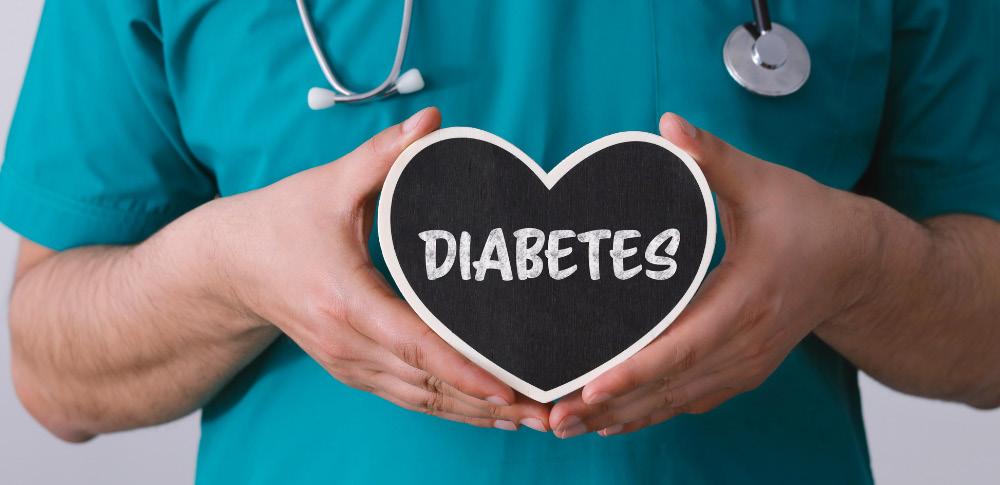
GESTATIONAL DIABETES is when diabetes comes on and affects the person during their pregnancy. Gestational diabetes is very similar to type 2 diabetes and occurs when your body can’t make enough insulin during your pregnancy. During pregnancy, your body makes more hormones and goes through other changes, such as weight gain. These changes cause your body’s cells to use insulin less affectively.
Gestational diabetes typically does not have symptoms and the patient would need to be tested for it. Treatment includes monitoring blood sugar levels, engaging in physical activity and eating the right foods at the right times. For most patients, gestational diabetes goes away soon after the delivery, but it can be a pre-curser to type 2 diabetes later in life. Every year in the United States, 2-10% of pregnancies will be affected by gestational diabetes.








Our 2022 Tied to a Cure Golf Flyaway presented by McDonald Automotive, was a wonderful success! Over 100 golfers joined us in beautiful Las Vegas on Thursday, October 20th for an all-inclusive round of golf at the prestigious Shadow Creek Golf Course followed by a stay at the luxurious Aria Hotel.


The event began in the early hours of Thursday morning with poker games, an open bar, a high-end liquor pull, a silent auction and breakfast generously donated by the Epicurean Group. Michael McDonald, President of McDonald Automotive and event co-chair, kicked-off the occasion by sharing his personal experience of losing a loved one to type 1 diabetes. Players were able to hear from Barbara Davis Center patient, Keaton Isakson, about the struggles and the bright sides of living with T1D. Players were also able to participate in a spectacular live auction on the plane on the way to the golf course.
With the help of all who attended, sponsored, and supported this tournament, we were able to raise over $300,000 for CDF to support diabetes research, patient support, and awareness of type 1. This was a recordbreaking amount for this event! A tremendous thank you to our Eagle Sponsors Lockton Companies, W.E. O’Neil Construction Company of Colorado and Urban Frontier; to our Birdie Sponsor Wakefield Asset Management, and to all those who supported us to make this tournament unforgettable. We are so grateful to our live and silent auction donors Inspirato, David Fleck, Joe Smolen & Webb Simpson, Dan Fuller, McDonald Automotive and Shadow Creek Golf Course. We extend a heartfelt thank you to Keaton Isakson, and his amazing parents Mark and Sarah as well as to our feature Pro Long Driver Dan “Smackintosh” McIntosh. Lastly, a special thank you Michael McDonald, Dan Fuller, Joe Smolen, and Todd Schieck for chairing this event year after year and making it the enormous success it is.

To participate in the 2023 Tied to a Cure Flyaway tournament, please contact Lindsay Klatt at Lindsay@ChildrensDiabetesFoundation.org.


My name is Alex Hess, I am 16 years old and have had type one diabetes for 12 years. The one thing my parents told me from the day I was diagnosed was that we would never stop type one from holding me down. During the lockdowns of COVID, I started running for fun and for exercise, it went on and off for a while, until one day in 2021 I decided I wanted to train for and run a half marathon. Learning how to run longer distances while managing type one was very difficult. Both keeping my blood sugar from going low and from going high during my longer runs was not easy, managing carb and insulin intake while running was very hard. Despite that, I finished my first half marathon in November of 2021. At that point, running was a passion, and I refused to let Type One prevent me from doing it. I ran another half marathon in February of 2022 and PR'd by a half hour. After a few weeks of an 'off season', I began training for my first full 26.2 mile marathon in May of this year. I did a 20 week training program, and while managing blood sugars was easier at first, once I started doing 20+ mile long runs regularly, it became a whole different story. You might not guess it, but running that long would frequently cause my blood sugar to spike, probably due to a combination of stress hormones and energy gels. Even after I was done running, it was a challenge to ensure my blood sugar was stable. Despite all the challenges, I ran my first full marathon in September, and finished the 26.2 mile distance in 4:33:32. The most important part of being an athlete with Type One isn't making sure your blood sugars are perfect all the time, it is about refusing to allow the disease to hold you down from what you want to accomplish. Even if managing blood sugars is stressful, which I know from experience it can be, it should not be what defines you.

My name is Emerson. I am 8 years old and I have had T1D for 5 years. I play soccer for the Broomfield Soccer Club 2014 Girls Premier team. I love soccer and I work really hard to not let diabetes hold me back from scoring goals, being a good teammate, and going beast mode on anyone defending me. Before soccer games, I have to be very smart about what I eat for breakfast to make sure my sugar isn't high. I normally eat eggs, yogurt, or sausage, and a few carbs. I also keep Gatorade in my soccer bag during games in case my sugar starts to go low. My mom and I have a secret code where she makes a hand signal from the side lines if my sugar is going low. Even though I have told my classmates about my diabetes, I was a little nervous to tell my teammates. But once I did, I felt relieved and calm. They are so supportive, they tell me how strong I am, and they want to help me stay healthy so I can play my best. I want everyone to know you can play any sport, be great at it, and play at the Olympics or World Cup if you want to, with T1D!

People with T1D can’t exercise? I wish they had told me that before winning 6 Olympic medals with T1D. Oh, wait. They did. Or something along those lines. Then I went out and became the fastest swimmer in the world, winning the gold medal (and title) in back to back Olympic Games.

For National Diabetes Awareness month I was asked to write a blog on diabetes myths, specifically the one: Type 1’s can’t exercise.
There are so many incredible athletes with T1D. So many have proven that those living with diabetes can exercise and compete at the highest levels of sport, and even be the best in the world.

…I’ve always been a firm believer that actions speak louder than words. And rest my case.
My name is Matti, and I’m a competitive dancer with Revolution Dance Academy. I’m 12 years old, live in Colorado Springs, CO and was diagnosed with T1D a little over a year ago. I’ve been a competitive dancer for five years, and I take 11 classes each week – and I am an apprentice teacher for one as well! My classes range from ballet and jazz to acro and hip hop (my favorites).

When I was diagnosed, I was really worried that I wouldn’t be able to continue dancing. The staff at the Barbara Davis Center reassured me that I’d still be able to dance, but that I’d just have to do things a little bit differently. Some of the things that I have to think about in a different way now include making sure that my sugar is at the right level before I arrive for class; having snacks for lows on hand and drinking plenty of water. I check my levels frequently throughout class to make sure I’m not too low or too high using my Dexcom, which helps me stay on top of things. My family and I also met with the studio owner, Miss Toni, and went over my doctor’s plan for treating highs and lows, and together we agreed on what would work best for my specific schedule. My teachers are aware and know what to look for, and so are some of my fellow dancers.
One of the things that I have to pay closer attention to now is that my activity level changes from class to class. Ballet and lyrical aren’t quite as physically demanding as acro or hip hop, so I may need to prepare for these classes differently. I’m actually doing a science project for the school science fair that will help me explain how the different types of dance classes affect my numbers personally. I’m taking notes on what I eat beforehand, what my levels are before and after each class, and whether I had to treat a high or low along the way. When my project is done, I’ll have a better understanding of how my classes affect me, and hopefully I’ll be able to use that information to spread awareness and manage my personal journey a little bit better.
I’m looking forward to competing this season. Competition season starts in February, and runs through March. This year, I’ll be competing in 4 different events, and dancing a total of 10 dances at each event, including a solo and two duets. Those weekends are really busy, exciting and challenging – and every one of those things may affect my blood sugar. On competition days, I’ll need to pay extra attention to my numbers, how much rest I get, hydration and lots more. I’m grateful to have my Dexcom to help me through those types of things. T1D won't stop me from going and doing my best, and representing my studio with pride.
My name is Olivia. I am 14 years old and I love sports. Throughout my life, I have played basketball, soccer, tennis, golf, competed in gymnastics, skied, rock climbed, and even had a ballet career, though that one didn’t last long. When I was 10 years old, I was hospitalized with DKA and diagnosed with Type One Diabetes in the middle of the Colorado ski season. I had been on the mountain with my ski group just days before my diagnosis and got back on the slopes the same week I was released from the hospital. Though my confidence had been shaken, I went with my dad and skied again. Sports were the first thing I returned to after my diagnosis, even before going back to school. Skiing that day with my Dad taught me that although my life would never be the same, I could still do everything I did before, except make insulin of course. My doctors immediately got me set up with the Dexcom G6 blood glucose monitoring system, so that I could run, play soccer, and fly down the mountain again, and with just a glance at my receiver I would know what my sugar was. Now, cross country running is my main focus. I just completed my first high school varsity season. My cross country journey didn’t start until after my diagnosis, so diabetes has pretty much always been a part of my runs. Both of my parents are runners, but running with T1D is a whole different story. It took a lot of trial and error. Running typically makes my sugar drop pretty fast because I am using a lot of energy. However, the list of things that impact my blood sugar is infinite. Stress, excitement, weather and hydration are just a few things that can make me go high or low. You can never do the exact same thing twice and get the same result. It’s a constant battle, from day to day trying to figure out what to set my basal rates to, and how many free carbs to have before the run. For the most part, I have found that going into exercise mode on my T:slim x2 insulin pump about an hour before I start, eating a 15 carb Protein bar and small piece of fruit about a half hour before running is helpful for keeping my sugars in range. I check my blood sugar via my pump once in a while while running. For training, I run with a small sports backpack that has my glucometer and low snacks. For races I stuff my pockets with candy. Being an athlete with Type 1 Diabetes is an extra challenge that sometimes makes me feel like I should have different standards than everyone else. However, the reality is that all runners and all athletes have to take care of their bodies in their own ways. When we do this on an individual level, we can train at our own pace, set out limits, and then push those limits together, no matter our pancreatic function. Despite its challenges, running with Type One Diabetes is also very rewarding. Running is a hard sport, it’s as equally physical as it is mental. Diabetes adds a whole other level and I think diabetic runners can connect with each other on a deeper scale. In one of my first races of the season, another runner came up from behind me and exclaimed “Diabuddies!” We bumped CGMs and ended up running the rest of the race together. Moments like this show me why I run; playing sports has given me so much strength and confidence that I think is crucial to diabetes management. Sports bring me joy, while teaching me discipline. I could not be happier with my team. So now I would like to give a huge shout out to DSST: Byer’s High School Cross Country Team!! I am so blessed to have been welcomed onto the team this year. You all have pushed me to be my best runner and our team culture is truly special. Thank you so much for a genuinely incredible season!! I would also like to thank my parents for all of their support, coaching me through diabetes 24/7, I could not be more grateful. With that, thank you to everyone who took the time to read this- have a great day and a very special diabetes awareness month!!




 By Claire McFadden
By Claire McFadden
3:33AM blinked the boxy red numbers of the CD player clock sitting on the shelf above my head. I’m hunched over, squatting on my bedroom carpet in my soft pink pajama set, pricking my pinky finger and squeezing out a tiny drop of blood onto the test strip of my glucose testing meter.
As I wait for the five seconds it takes for the meter to read my blood sugar to pass, I anxiously look beside me at my bookshelf and see the tattered spine of my copy of “The Doll People.” I’m 11, and this is my favorite book.
The pitter patter of rain trickled out of the CD player’s speaker. An hour before when I’d woken up from the sweat of a low blood sugar, I’d pressed play to start a CD called “Midnight Rain.” The recorded rainshower was an hour long, and birds chirped in the last 10 minutes of the track. The birds were chirping, and it was time to test my blood sugar.
55 mg/dl read my glucose meter. The soothing sound of the rain fell short of my ear as it was blocked by the umbrella of my anguish.
I wrung my hands and squeezed out silent tears so as not to wake anyone else in the house up. I knew it was dangerous to sleep with a blood sugar below 70 mg/dl for you could slip into a diabetic coma and never wake up. Yet I also knew to raise my blood sugar I had to eat.
I can’t eat it isn’t fair my body doesn’t need it my stupid blood sugar is just low because I’m diabetic it’s out of my control I messed up I took too much insulin its my fault I will punish myself I will not eat I’ll get fat if I eat I’m so angry I’m so tired I just want to go back to sleep I can’t eat then I won’t feel perfect and safe and in control I will sit here all night if I have to I will not give in I will not be weak I will not eat I’m in control.
After a few nights of being awoken by a low blood sugar I’d figured out that if I made myself upset enough the stress hormones released in my body would raise my blood sugar, and enable me to go back to sleep without eating. Sometimes it took hours of multiple panic episodes, and I’d learned to use “Midnight Rain” to keep track of when it was long enough for the adrenaline to have flooded my body and to test my blood sugar.
If we step away from this moment on a Tuesday night in 2013 into the present, I can now tell you how desperately I grasped for a sense of control for eight long years of disordered eating and self harm. I can tell you what it feels like to have an A1C of 12%, or an average blood sugar of 298, for years straight. (Not good). I can tell you how I never felt more controlled by my T1D than when I chose to control what I ate rather than manage my blood sugars.
I can now define the difference between control and management, and how these two words entangle themselves into a hefty knot of the paradox of eating disorder recovery and type 1 diabetes management, which begs the question, how can you stop obsessing over what you eat when you still have to count the carbs you eat and calculate your insulin doses? How do you let go of control while staying in control? Where’s the line between control and management?
Today I can tell you how I wish someone had guided me to ask myself why I found comfort in an eating disorder as it destroyed my physical and mental health. Now I can tell you how I ended up in an ER psych ward three days into my first semester of college because I couldn’t take care of myself, and how this rock bottom experience made me realize maybe I didn’t have perfect control of my life.


Miriam Webster defines the verb “to control” as “to exercise restraining or directing influence over; to have power over or to rule,” while “to manage” is defined as “to handle or direct with a degree of skill, such as to treat with care.” I can now tell you how managing my T1D is hard, but not nearly as hard as it was to value controlling myself over respecting myself. Now I can tell you how therapy and positive connections saved my life, but only because I chose to let go of the shame and guilt that came with the initial sense of letting go of control of what I ate.
But back on my bedroom floor in 2013, I couldn’t tell you any of that.
After one or two rounds of Midnight Rain my blood sugar finally rose above 70 mg/dl, and I was able to sleep, in control.




Another frighteningly fabulous Boo Bash for Type 1 families held at the Colorado School of Mines. This year we had a pumpkin decorating contest, table games, limbo, balloon sculptures and an amazing costume parade. There were so many wonderful costumes, kids and adults alike! So much fun was had by all. A very special thanks to the Phi Delta Gamma Fraternity, our DJ, Chris Michalik, from MAG Music (who very generously donated his time), our Event Chair Kate Kiker, Judy McNeil and all the volunteers who made Boo Bash the amazing success it was. Also a big thank you to the Pepsi Company for donating sugar free soda year after year and thank you Domino’s for another yummy lunch. Boo Bash 2022 was another huge success.











 By Lori Finch
By Lori Finch
As parents, the only thing we can be sure of is change. This is especially true as you send your child off to college. However, when you send your type 1 child off to college, these changes could result in death. Every type 1 parent knows that this statement is not an exaggeration. All parents worry about the usual college issues like academic stress, roommate issues, sleep patterns, eating habits, and alcohol and drug use. Type 1 parents also have the added worries of blood glucose levels, insulin management, and DKA just to name a few.
So, what is a type 1 parent to do? Up until now, our type 1 children have lived at home where we can see them daily, but what happens when we don’t have eyes on them every day? We want to navigate the college process without passing on our own anxiety, but how do we do that? First, parents must have a straightforward conversation with their type 1 child to prepare them for what to expect if their diabetes management gets off track. Parents need to ask questions like: Where is the Health Center located? Where is the nearest hospital? Will your roommate, RA, or RD know what to do in case of an emergency? Who will you call in case of an emergency? Second, type 1 parents and students need to know that they are not alone. There are several online resources such as, College Diabetes Network which provides suggestions on what to look for as you begin searching for colleges, how to prepare for leaving home, and what to do once you’re on campus.

Our family is fortunate enough to live in Colorado where we have the Barbara Davis Center for Diabetes (BDC). The BDC offers a Beyond High School workshop that is a fun and interactive program that prepares young adults with type 1 diabetes for several life changes during their transition from high school to college, to work, and living away from their parents. They also offer a session for parents with a question-and-answer portion.

Realistically, your type 1 student may say that their only concern is getting up for their 8AM class; however, know that they do have many, many concerns regarding their diabetes management. In addition, know that they may resist having conversations about their diabetes management. Their pushing you away is part of the process of maturation. Give them some time and space and then approach the topic again. Your relationship with them will continue to evolve during their college years and beyond. Your role will be on an ever-changing spectrum from manager to consultant. This change does not mean that they are leaving you behind, but it does mean that they are taking meaningful steps towards adulthood. This change represents an emotional separation for both parents and their type 1 children. This emotional separation is perhaps the most difficult change of all, but know that your love, support, and counsel will continue to be necessary as your parental role continually shifts.
Remember that the passage to adulthood takes time especially if there is the added challenge of type 1 diabetes. As parents of college students, we want our children to get good grades, to be kind and compassionate to others and themselves, and to find meaningful relationships. But as type 1 parents, our greatest hope is that we’ve given them all the necessary tools and resources to take care of their type 1 diabetes so that they can have the most normal college experience possible.











Founding President, Amy Davis
Mrs. Gina Abou-Jaoude
Mrs. Christy Alberts
Mrs. Jamie Angelich Mrs. Karen Aylsworth
Mrs. Linda Broughton Mrs. Tangy Buchanan
Mrs. Joy Burns

Dr. Bonita Carson
Mrs. Lisa Corley
Mrs. Nancy Cowee
Mrs. Dalyla Creaghe
Mrs. Norma D’Amico
Ms. Donna Douglas
Mrs. Margy Epke
Mrs. Lori Finch
Mrs. Chris Foster
Mrs. Helenn Franzgrote
Mrs. Sally Frerichs
Mrs. Debbie Gradishar
Mrs. Helen Hanks
Mrs. Georgia Imhoff Mrs. Marty Jensen Mrs. Gail Johnson
Mrs. Sharon Kamen
Mrs. Janet Knisely
Mrs. Cheryl Lebsock Mrs. Shelley Lucas
Mrs. Suzy Love
Mrs. Judy McNeil
Mrs. Sally Newcomb
Mrs. Barb Oberfeld
Mrs. Gretchen Pope
Mrs. Carol Roger
Mrs. Kay Stewart
Mrs. Diane Sweat
Ms. Charlotte Tucker
Mrs. Loretta Tucker
Mrs. Melissa Tucker
Mrs. Jane Weingarten
Sir Michael Caine
Mrs. Lisa Corley
Mr. and Mrs. Robert A. Daly
The Honorable Diana DeGette, U.S. House of Representatives, Colorado
Mr. Neil Diamond
Mr. Placido Domingo
Mr. John Elway
Mr. David Foster
Mr. Kenny G
Mr. David Geffen
Mr. Magic Johnson
Mr. Quincy Jones
Ms. Sherry Lansing
Mr. Jay Leno
Mr. Lionel Richie
Mrs. Adrienne Ruston Fitzgibbons
Mr. George Schlatter
Ms. Maria Shriver
Ms. Brenda Richie
Ms. Barbera Thornhill
Miss Joan van Ark
Mrs. Cindy Wells
Mr. Gary L. Wilson
Mr. Stevie Wonder
See complete list at ChildrensDiabetesFoundation.org




